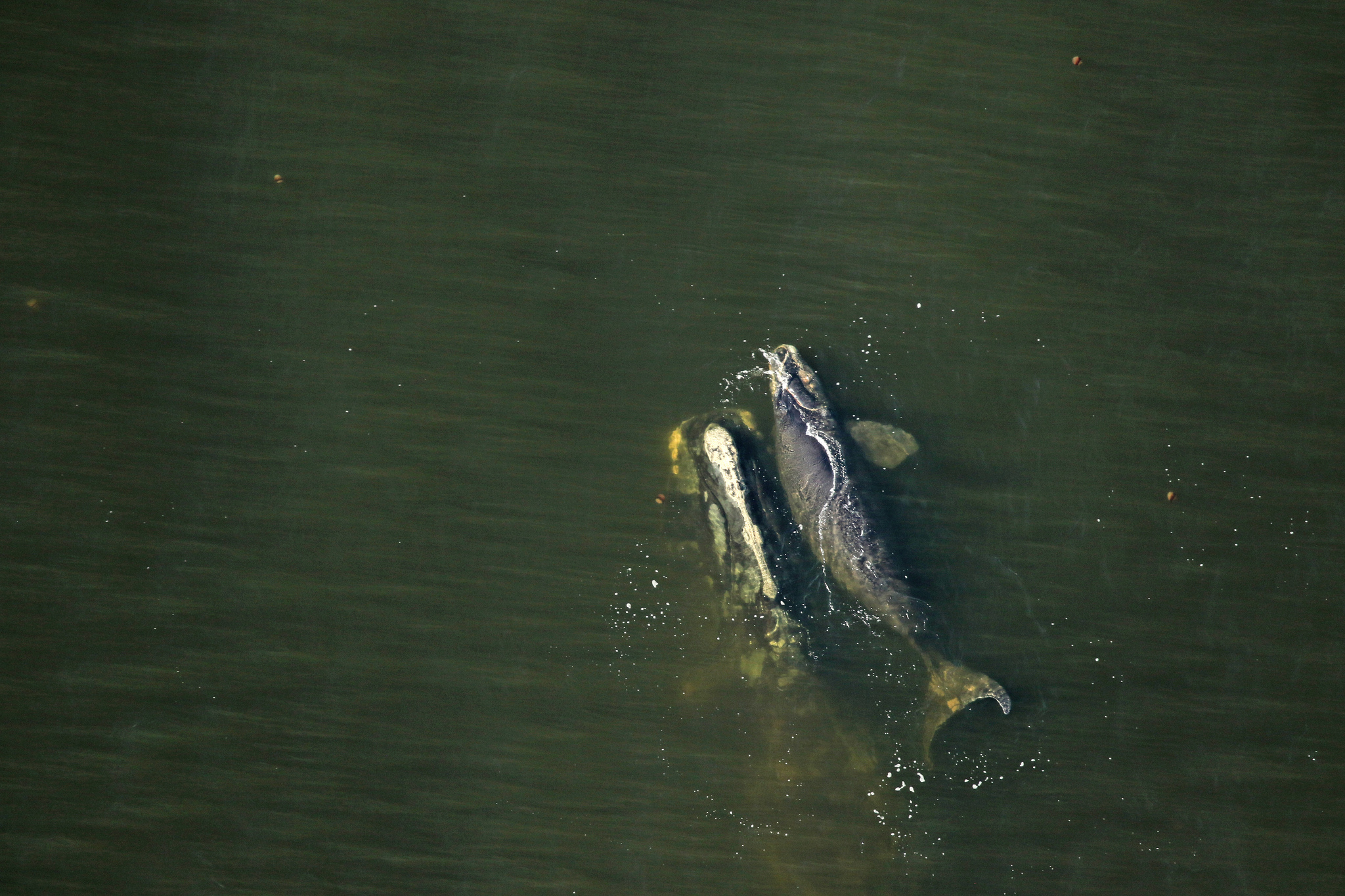

Third North Atlantic Right Whale Calf of 2018-2019 Calving Season Sighted Off Florida
January 25, 2019

North Atlantic right whale #1204 and her calf swim about three nautical miles off of Amelia Island, Florida on January 17, 2019. This is the third calf documented during the 2018-2019 season.
credit: Florida Fish and Wildlife Conservation Commission, NOAA permit #20556-01
North Atlantic right whale #1204 has been seen near Amelia Island off the coast Florida with a calf - the third calf of the 2018-2019 calving season. The calf was first seen on January 17, 2019 and is #1204's 9th known calf. She was seen in April and May of 2018 in Cape Cod Bay by the Center for Coastal Studies so researchers believe that she was most likely pregnant at the time of those sightings. She now joins #1240 and #1334 as the only North Atlantic right whales known to have had at least nine calves, making her survival all the more important so she can continue adding to the highly endangered population.
The age of #1204 is unknown but she was first sighted in 1982 and was seen with her first calf in 1988 with her most recent calf being born in 2013. Healthy right whales usually give birth every 3-4 years but the calving interval has risen dramatically in recent years, rising from 4.4 years in 2014 to 10.2 years in 2017[pdf] with no births being documented in 2018. The calving intervals for the three mothers with calves seen so far this year are 9, 3 and 6 years so the average interval of 6 years is better than 10.2 but still needs to improve.
Philip Hamilton, research scientist at the Anderson Cabot Center for Ocean Life at the New England Aquarium, told the CBC, "One of our concerns with the lack or slowdown in reproduction is it seems these animals aren't in good enough shape to give birth," and that, "It's very possible they're not finding enough food to get them in robust condition to support a calf." The CBC also reported, "There has been a dramatic shift in food availability in the last few years, forcing many whales to migrate from the Bay of Fundy in the summer to the Gulf of the St. Lawrence." This increases the distance they have to travel, and the amount of energy they use up, and coule be affecting reproduction.
Entanglements in fishing gear also affect the calving rates as even entanglements that the mothers survive can reduce the amount of calves. A recent report from the Northeast Fisheries Science Center (NEFSC) stated, "The energy demands from the drag associated with entanglement can reduce the likelihood that a female can successfully reproduce. Years between births also increases for females given the recovery period needed from the physical costs of entanglements, which can last from months to years." The mothers can be killed during this recovery period, taking not only their life but preventing the birth of any calves they may have had in the future.
The news of these recent births are much-needed signs of hope in what have been some particularly bad times for North Atlantic right whales. Only five calves were born in 2017, combined with 17 known deaths that year (12 in Canada and 5 in the US), led to researchers estimating that only 411 North Atlantic right whales remained. The three known deaths in 2018 (all of which were attributed to entanglement in fishing gear), and the lack of any births in 2018, brought the number down to 408 but it's now back to 411 with these three births. Their situation is fragile and they need all the help they can get but we remain hopeful when we see these new calves and know that we must keep fighting to protect these whales.
More Information:
3rd right whale calf of season spotted - Cape Cod Times - 1/18/2019
Second North Atlantic Right Whale Calf of 2018-2019 Season Sighted Off Florida - 1/21/2019
First North Atlantic Right Whale Calf of 2018-2019 Season Sighted Off Florida - 12/29/2018
To find out more about what is happening to North Atlantic and North Pacific right whales and how we can all take actions in our everyday lives to protect them, please visit our Facts and Action sections on our website. We also post updates and pictures on Facebook, Tumblr and Twitter.